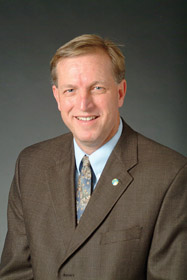Case studies of cities doing it right
Some say it’s easier to ask for forgiveness than it is to ask for permission. But if you’re planning on opening a new business or expanding an existing one, that’s not a good idea. Indeed, one of the hardest aspects of launching a business is maneuvering through the tangled web of permitting, which varies from municipality to municipality. Understanding that the process can be daunting, several North Bay communities have taken steps to ease the pain without bending the rules as they continue to work to expand their economic growth after the Great Recession debacle—and let’s just say they’re now a lot more “user friendly.”
Petaluma
 Petaluma is the oldest city between San Francisco and Eureka (incorporated in 1858). Over the years, it developed “a bad reputation, known to not be friendly to business,” says Onita Pellegrini, CEO of the Petaluma Chamber of Commerce for the last 21 years. “Once you get that reputation, it’s hard to tear it down—but that’s certainly not the case now. The culture at City Hall in the planning department has changed drastically over the past few years.”
Petaluma is the oldest city between San Francisco and Eureka (incorporated in 1858). Over the years, it developed “a bad reputation, known to not be friendly to business,” says Onita Pellegrini, CEO of the Petaluma Chamber of Commerce for the last 21 years. “Once you get that reputation, it’s hard to tear it down—but that’s certainly not the case now. The culture at City Hall in the planning department has changed drastically over the past few years.”
The main reason for the change? In an effort to save Petaluma’s planning functions during the recession, in 2009 Petaluma City Manager John Brown worked with the Metropolitan Planning Group to maintain services at less cost to the city. One piece of the solution was to turn the planning process over to contractors (not the building variety!) instead of maintaining it within city government. Brown drafted an Economic Development Strategy that was adopted by the City Council in 2010. In early 2011, Ingrid Alverde was hired to oversee implementation of that strategy; she’s now the economic development manager for the city of Petaluma. “The addition of Ingrid has helped a lot,” Pellegrini says. “For example, when a restaurant gets into grease traps, dishwashers and pipes—and hits a wall—Ingrid can step into the planning process and help the business owner understand what’s being asked of them and act as a liason between the business and city hall. Ingrid helps find the answers: We all work together to make it work for all parties.”
Alverde has been working for Petaluma since 2011. During her tenure, the city has developed a tool kit that businesses can use to navigate the permitting process. The tool kit recently won a Gold Award from the International Economic Development Council.
Petaluma also has invested in Open Counter software (see “Open Counter") an interactive program that operates a lot like Turbo Tax. It asks questions and, based on the answers, provides more information about specific requirements that must be met and permits that are needed. Finally, city staff meets actual and potential applicants weekly to review new developments, businesses and so forth.
“Say you want to buy a building, add on to a structure or move your production facilities. The group asks very specific questions related to the particular site and identifies potential red flags early before the applicant closes escrow,” Alverde explains. “We go over zoning, parking requirements, ADA [Americans with Disabilites Act] upgrades, traffic plans, fire sprinkling systems,” and much more. “Many of the requirements can be very expensive and the applicant finds out up-front what will be involved before they commit. In the past, that might have been five or six different conversations, but now we get everyone in the room early on.”
In the end, Alverde and her team provide a lot of trouble-shooting for businesses looking at Petaluma establishments. “It’s our job,” she says. “We need to help them understand everything so they can look for another space if they need to or negotiate with their landlord” to get certain costs covered. “That way, they can adjust their budget and move forward with their eyes wide open, completely clear on what’s coming. Our goal is to arm businesses with the information they need to be successful, while at the same time create transparency and predictability. When things are unpredictable and unclear, the permitting process gets frustrating and challenging. No one on the city staff wants to hurt a business, but we can’t bend rules. The building code is written for safety. The fire code is written for safety.”
Alverde’s team focuses on bringing new businesses to Petaluma and helping existing small companies find continued success. “We help a variety of existing businesses, like Clover Stornetta and Cowgirl Creamery, which are expanding,” she says. “We also help startups, like Griffo Distillery, which recently opened in Petaluma.”
A testament to Petaluma’s more business-friendly climate, adds Pellegrini, are the major projects that have been completed in recent years—Target Center, Deer Creek (with Friedman’s Hardware as the anchor), the downtown Theater District, Hotel Petaluma and what Pellegrini describes as “the vibrant revitalization of downtown: It’s busy in the daytime and nighttime. Restaurants serve businesspeople and tourists during the day, and at night, there are lots of locals who go out to dinner and enjoy our nighttime commerce as well. During the day, we have numerous retail businesses, offices and services contributing to our commerce sectors,” she says.
Novato
 Just south of Petaluma, in northernmost Marin County, lies Novato, one of the youngest incorporated cities in the North Bay, despite its long history (its Chamber of Commerce was founded in 1915).
Just south of Petaluma, in northernmost Marin County, lies Novato, one of the youngest incorporated cities in the North Bay, despite its long history (its Chamber of Commerce was founded in 1915).
In its early years, the chamber was the de-facto governing body for Novato, putting in the first sidewalks downtown and getting the U.S. Post Office established. It was active in championing construction of the Golden Gate Bridge. But even after the bridge opened, it still took more than 20 years for Novato to finally incorporate (1960). As a result, the city’s business permitting process is very different from other North Bay municipalities.
“Novato has more special districts than most cities,” explains Coy Smith, CEO of the Novato Chamber of Commerce. The districts were set up to serve the community before this city was formally incorporated, and they still exist today.
“We have a water district, a fire district and a sanitation district, for example, and they’re all separate from city government,” Smith says. In addition to running a project or business past the city’s community development department requirements, the special districts each have to sign off as well.
“Generally, all play well together in the process,” Smith says, “but it’s hard to create a one-stop shop because they’re not all operated and managed by the city itself.”
To help new businesses quickly identify appropriately zoned areas and learn which of various permits will be needed, the chamber suggested the city invest in the OpenCounter software that Petaluma is using and, according to Bob Brown, Novato’s community development manager, the program should be up and running by the time this story is published.
“To me, Open Counter is the holy grail in terms of customer service,” Brown says. “It will be a great guide for applicants through the permitting maze.”
Despite its more complex permitting process, Novato is thriving. The chamber has nearly 500 members and the economy is definitely on the upturn, Smith says.
“We haven’t fully recovered to what things were prior to the 2008 recession, but we’ve had some real positive growth, especially in the life sciences—BioMarin, Ultragenyx and Horizon Pharma (formerly Raptor Pharmaceuticals), for example—and the video gaming industry with companies like 2K. Over all of Marin County last year [2015] there were 3,500 jobs created, and we got our fair share,” Smith notes.
American Canyon
There’s a lot going on in American Canyon, a rapidly changing city in southern Napa County. “We’re a sleepy bedroom community that’s starting to wake up,” says James Cooper, CEO of the American Canyon Chamber of Commerce at the time of this interview (he has since been named CEO of the Vallejo Chamber of Commerce).
The city will soon open its fifth retail center, Napa Junction 3, and is looking to develop Watson Ranch, the site of an old basalt mine and cement plant buildings (the ruins of which will be incorporated into the development). Watson Ranch will include 1,250 homes, parks and trails, an elementary school and a commercial development with a tourism/entertainment focus.
The city also has a specific plan for its Broadway District, a two-mile stretch of Highway 29 that’s in the core of the city.
 “There are vacant and underutilized properties there,” says Brent Cooper, American Canyon’s community development manager. “We want to break that into focused land-use districts. We’re hoping to provide greater certainty for future development by vetting what would be acceptable to the community.” The city is working with CalTrans and the Napa Valley Transportation Authority to redesign Highway 29, the major corridor through town, adding one additional travel lane in each direction, signal timing, sidewalks, bike lanes and landscaping to make it more pedestrian friendly and improve traffic flow.
“There are vacant and underutilized properties there,” says Brent Cooper, American Canyon’s community development manager. “We want to break that into focused land-use districts. We’re hoping to provide greater certainty for future development by vetting what would be acceptable to the community.” The city is working with CalTrans and the Napa Valley Transportation Authority to redesign Highway 29, the major corridor through town, adding one additional travel lane in each direction, signal timing, sidewalks, bike lanes and landscaping to make it more pedestrian friendly and improve traffic flow.
Both James and Brent believe small businesses have a fairly easy time with the American Canyon permitting process, but James believes larger developers have a slightly more difficult path. “Things bog down and take more time, and lots of developers complain,” he says.
“What works best are the applicants that have done their homework—conducted a market study, created a business plan and hired the right professionals to assist them,” says Brent. “There’s a vast amount of information on our city website and in print here at City Hall. We’re open five days per week and we’re a small town, so we take whatever time is necessary to walk people through the process and answer their questions.”
Like Petaluma, American Canyon has a standing meeting every week that’s attended by all city staff involved in development review. Projects are reviewed, questions are asked and, “we all touch base so we’re all on the same track. It’s a great way to keep the development permitting process on the front burner.”
Businesses interested in American Canyon must address the issue of responsible water use. “The statewide drought requires creative solutions,” Brent explains. “We’re pursuing several solutions to conserve water use without slowing development that’s beneficial to the economy.”
He continues, “The city has replaced leaking pipelines and converted parks and street landscaping to recycled irrigation water. We work closely with applicants to make sure their projects are water efficient with drought tolerant drip irrigated landscape and water-efficient plumbing. New commercial and residential apartment projects have been dual plumbed to use nonpotable [recycled] water for toilet flushing.
“These water saving efforts let new development move forward with our limited water resources.”
Rohnert Park
 When it comes to being business-friendly, Rohnert Park officials consider their city to be the poster child. It even provides testimonials from key local businesses.
When it comes to being business-friendly, Rohnert Park officials consider their city to be the poster child. It even provides testimonials from key local businesses.
Recently, Don Schwartz, Rohnert Park’s assistant city manager, met with a coalition of 12 or so business developers. “Usually, when we get an invitation like this, it’s because they want to know what’s going on in Rohnert Park. That wasn’t what it was about. Instead, they wanted to know what we do that makes it so much easier [to do business here].
“The secret sauce in Rohnert Park is our culture around business friendliness. In fact, Bruce Orr [principal with 356 Advisors, Inc., a real estate management and development firm] once told us that, if business-friendliness were an Olympic sport, Rohnert Park would win a gold medal every time,” Schwartz proudly says.
Schwartz says the city’s business friendliness is strong because of its culture, which includes leadership from the city council and city manager, commitment and great attitudes from staff at all levels, efficient processes, readily available experts on contract and effective use of technology. “It all ties together to create a culture and environment that makes it work for businesses here,” he says. “At the same time, we never sacrifice our standards.”
Jeff Beiswenger, Rohnert Park planning manager, says a major factor in the city’s success working with businesses is its pre-application conference, where staff from multiple departments and disciplines meet with applicants and provide them with comments on their ideas early on, making the whole process move much faster. “Planning can sometimes be a never-ending cycle of review,” he says. With everyone in the room from the beginning, things go much smoother.
Another feather in the city’s cap? “If a business needs an inspection, we give them a definitive time. We’re better than the cable guy. With us, there’s no such thing as a four-hour window,” says Schwartz.
And while city staff is fairly lean, Rohnert Park has a stable of contracted consultants readily available. “When we need someone to complement our staff, we have them on-call, pre-qualified and ready to go. It’s kinda like ‘Dial 1-800-Contractor,’” laughs Schwartz.
 While Rohnert Park is famous for Sonoma State University and the Graton Resort and Casino, it’s manufacturing and tourism that drives its economy, according to Schwartz—and right now, housing and hotels are hot. He points to Sportsmen’s Warehouse, which opened in 2016, and Bear Republic Brewing, which is expected to open its doors soon.
While Rohnert Park is famous for Sonoma State University and the Graton Resort and Casino, it’s manufacturing and tourism that drives its economy, according to Schwartz—and right now, housing and hotels are hot. He points to Sportsmen’s Warehouse, which opened in 2016, and Bear Republic Brewing, which is expected to open its doors soon.
“The volume of development right now is very large. Over the next 10 years, we’ll add 4,000 housing units. Oxford Suites is nearing completion. Another hotel will break ground sometime next year and we’ve got interest from others as well,” Schwartz says.
As they say, if you build it, they will come. A lot of North Bay communities are bending over backward to make things possible—without bending the rules.
OpenCounter
By Jane Hodges Young
Peter Koht, co-founder and COO of OpenCounter (a software program that helps businesses navigate the complex maze of city permitting) was the economic development coordinator for the city of Santa Cruz when he discovered a problem with his tool kit. “Since World War II, the State of California tools for economic development have been misaligned,” he explains. “Tools you can use to attract or retain large manufacturing companies or large business services companies aren’t the same tools you need to attract or retain small businesses or knowledge-based startups. There was nothing out there to help folks understand the complexity of permitting.”
So the self-described “civics nerd” created a software program for Santa Cruz that, he quickly realized, was needed elsewhere. In 2013, with a Knight News Challenge Award, he and a team rewrote the functionality of the program so it could work for a variety of cities. The rest is history.
Today, Boston, Indianapolis, Boise, San Diego and a host of other cities, including Petaluma and Novato in the North Bay, use OpenCounter.
Basically, OpenCounter can take a city’s zoning code (which, in Boston, was a 300,000-word document) and turn it into computer code. Potential business applicants answer questions, Turbo Tax style, and layers begin to peel away.
Want a restaurant? A map pops up that shows you zoned areas. Is it a drive-in? Another map pops up showing areas zoned for drive-ins. Interested in starting an entertainment center? Bingo: another map. Necessary permits are also part of the software.
“A guy running an accounting service out of his house has no need to get a food safety or fire repression permit,” Koht says. “But other businesses do.”
The service is available 24-7, so business applicants can log in at 3 a.m. and find out whether or not the cute little storefront around the corner can be used as an ice cream shop, for example.
“It makes it easier for a potential applicant to know where to go looking for space so they don’t waste their time looking in the wrong area,” says Ingrid Alverde, economic development manager for Petaluma.
While cities have all this information available in print and usually online, “to get the data you need, you have to know what you’re looking for,” Koht says. “Unless you know, it’s hard to find specific information on city websites.”
Alverde says the program is great for businesses, but also for city staff. “It saves us so much time, because we don’t have to research the same thing over and over. There is also consistency in interpretation.”
Alas, nothing is perfect, she notes. “But we keep working to improve.”
www.opencounter.com
A Business Viewpoint
By Jane Hodges Young
The city of Novato has special districts (fire, sanitation, etc.), which means navigating the permitting process can be a bit tricky. But Cindi King, owner of CycleBar Novato, a newly opened indoor cycling studio located in the city’s Hamilton Marketplace, says her experience was anything but a rough ride.
Her business required a permit from the city’s planning and building department and another permit from the sanitation district. King says the staff at the Novato permit office went out of their way to be helpful and the only delay was getting one printed permit, which she attributed to “a very busy staff.
“We had an excellent contractor and we also used a national construction management firm through CycleBar corporate, so they guided the permit process. It was calendared for four-to-six weeks and we definitely were within that window—that included everything from submitting the first plans to getting the actual permit,” she says. Based on conversations with her team, King believes they, too, found the experience relatively easy: “They were often telling us we were very lucky and relating horror stories from other cities,” she says.
Where Are the Workers?
By Bonnie Durrance
The greatest problem facing commercial and residential contractors today, with money plentiful and a backlog of business ready to get started, is a shortage of workers. “That’s what will slow down construction in the years ahead,” says Keith Woods, CEO of North Coast Builders Exchange. “We have a retiring baby boomer generation of plumbers, electricians, roofers and carpenters, and we aren’t getting the young employee base that construction needs.”
He says he gets requests every week from contractors looking for workers. “There’s so much work out there. I had one guy tell me just yesterday, from up on the coast, ‘For every job I take, I’m turning down three others because we’re so busy and we don’t have the workforce to accommodate it.’” Part of that problem, for workers at all levels, is a lack of housing.
“I talked to somebody recently who owns an engineering company,” says Woods, “and they said they were having a miserable time trying to recruit people—from around the state or around the rest of the country—because of housing sticker shock. These are people who are going to make $75,000 to $100,000 per year. Homeowners love the idea that housing prices are rising because it turns their home into a retirement piggy bank, but more and more young people will head off to Phoenix, Austin, San Antonio, Oklahoma City or Reno, where they can actually afford a home.”
John Bly, president of the Engineering Contractors Association, explains that the term “affordable” whether or not it applies to a homebuyer, may not apply to a developer: “’Affordable housing’ should be renamed ‘subsidized housing,’ because that’s ultimately what it is,” he says. “A developer isn’t going to risk his or her money to build so-called affordable housing unless there’s little risk of losing that money. In other words, the developer needs to make a profit. So, affordable housing as determined by a buyer may not be affordable for the developer.
“Housing isn’t getting built because it doesn’t pencil out,” he continues. “Nobody’s going to build affordable housing to lose money.” Projects that do “pencil out,” he says, are either specific office space for a specific owner who can afford to build it the way they want it, high-priced estate homes and, occasionally, some developments.



